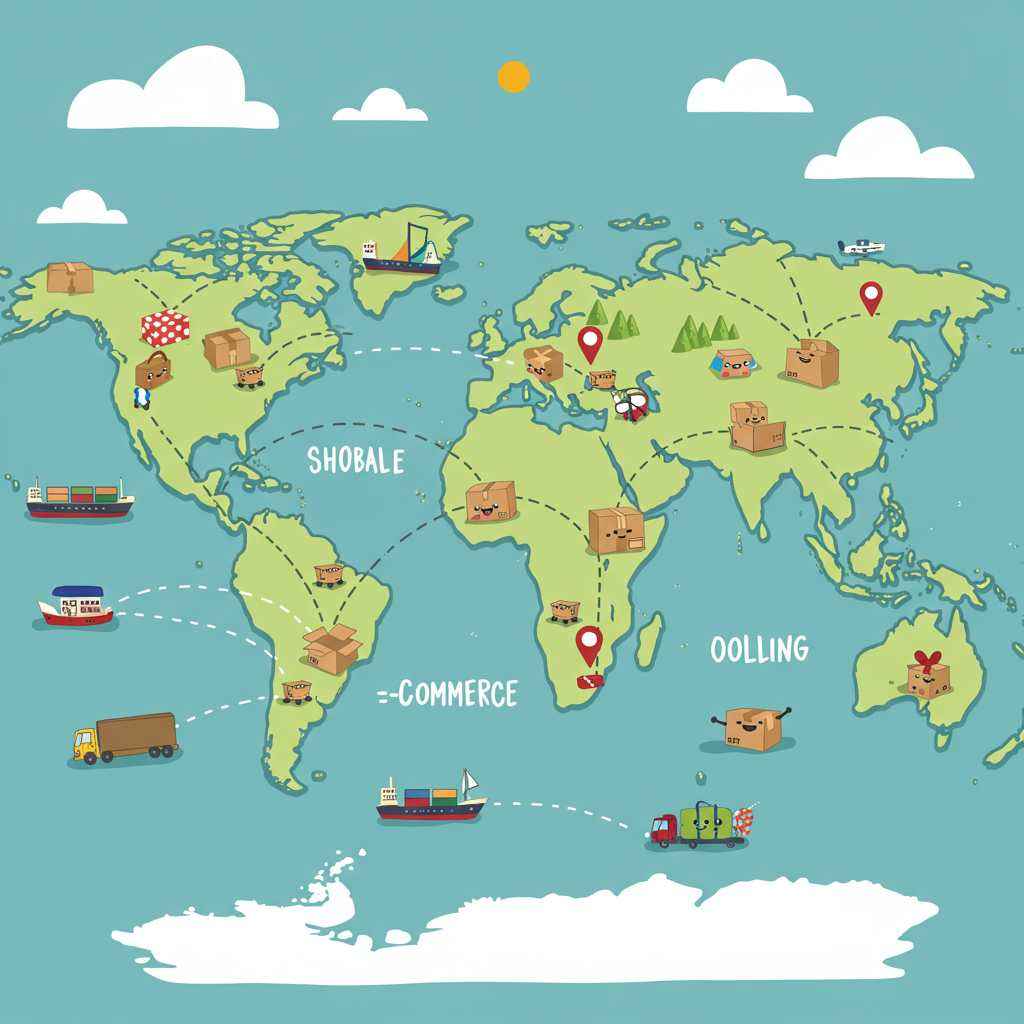Unlock Global Growth: A Merchant’s Comprehensive Strategy for Seamless Cross-Border Deliveries
As a Shopify merchant, I know the thrill of a new order. But what about when that order comes from halfway across the world?
International shipping can seem daunting, a maze of customs forms, duties, and carrier options.
However, I’m here to tell you that with the right strategy, expanding your reach globally is not only possible but incredibly rewarding.
It opens up vast new markets for your products, significantly boosting your potential revenue.
Today, I want to walk you through building a robust Shopify shipping strategy specifically for international orders.
My goal is to demystify the process and equip you with the knowledge to confidently ship worldwide.
First, let’s talk about research and planning. Before you even think about a shipping label, you need to know where you’re shipping.
I always recommend identifying your target markets. Which countries show the most interest in your products?
Consider factors like average income, cultural fit, and existing competition in those regions.
Next, I delve into the legalities. Each country has its own import regulations, prohibited items, and customs procedures.
It’s crucial to understand these to avoid delays or, worse, having your shipments rejected at the border.
My next step is choosing the right shipping carriers. You have several excellent options for international shipping.
Major players like DHL, FedEx, and UPS offer reliable, expedited services with comprehensive tracking.
For more economical options, especially for lighter items, I often look at national postal services like USPS, Royal Mail, or Canada Post.
They often partner with local postal services in the destination country, which can be cost-effective.
I also consider hybrid solutions, where a private carrier handles the international leg and a local postal service handles the final delivery.
Now, let’s tackle shipping rates. This is where many merchants get stuck. I find there are generally three approaches.
Flat-rate shipping can be simple, but it might not cover your costs for all destinations or product weights.
Carrier-calculated rates, often available through Shopify Shipping or third-party apps, provide real-time pricing based on package dimensions, weight, and destination.
This is my preferred method for accuracy, as it passes the exact shipping cost directly to the customer.
Lastly, offering free international shipping can be a powerful marketing tool, but I always ensure the shipping cost is baked into the product price to maintain profitability.
Customs and duties are perhaps the most intimidating aspect. I’ve learned that clarity here is paramount.
You need to decide whether you’ll ship Delivery Duty Paid (DDP) or Delivery Duty Unpaid (DDU).
With DDP, you, the merchant, are responsible for all duties, taxes, and customs fees. This offers a smoother experience for the customer, as there are no surprise charges upon delivery.
With DDU, the customer is responsible for these fees. While it might seem easier for you, it can lead to customer frustration and abandoned packages if they’re hit with unexpected charges.
I generally lean towards DDP where feasible, as it significantly improves the customer experience.
Regardless of your choice, I always recommend being transparent about who is responsible for these fees on your product pages and at checkout.
You’ll also need to accurately complete customs forms, such as the CN22 or CN23, and include a commercial invoice.
Assigning the correct Harmonized System (HS) codes to your products is critical. These codes classify your goods for customs purposes and determine applicable duties.
I always double-check these codes to avoid delays.
Proper packaging and labeling are next on my list. International shipments endure a lot.
I use sturdy boxes and ample protective packaging to ensure products arrive safely.
Clear, legible shipping labels with all necessary information – recipient address, sender address, tracking number, and customs declaration – are non-negotiable.
Tracking and communication are vital for international orders. I always provide customers with a tracking number as soon as the order ships.
Proactive communication about potential delays or customs issues can turn a potentially negative experience into a positive one.
I also set up automated email updates through Shopify apps to keep customers informed every step of the way.
What do you think about this article so far? I’d love to hear your thoughts on these strategies!
Returns and refunds for international orders require a clear policy. I outline who pays for return shipping and under what circumstances.
While it can be complex, a transparent return policy builds trust with international customers.
Integrating your strategy with Shopify is surprisingly straightforward. Shopify’s native shipping settings allow you to set up different shipping zones and rates for various countries.
For more advanced features, I explore the Shopify App Store. Apps can help with customs documentation, duty calculation, and even finding the best shipping rates.
Currency conversion is another key aspect. Shopify’s multi-currency feature allows customers to browse and pay in their local currency.
This significantly enhances the shopping experience and can boost conversion rates.
Finally, I emphasize excellent customer service. Be prepared to answer questions about shipping times, customs, and duties.
Having a dedicated FAQ section for international orders on your Shopify store can preempt many common inquiries.
In conclusion, while international shipping on Shopify presents its unique challenges, the opportunities for growth are immense.
By meticulously planning, choosing the right carriers, being transparent about costs, and leveraging Shopify’s tools, you can confidently expand your business globally.
I’ve seen firsthand how a well-executed international shipping strategy can transform a local business into a global brand.
Don’t let the complexities deter you; embrace the world as your marketplace.
Start small, learn, and iterate. Your next big customer might be just a few borders away.






